#Strait Bosphorus
Text

Golden Horn by Ivan Aivazovsky
#ivan aivazovsky#art#marine#golden horn#waterway#bosphorus#istanbul#constantinople#turkey#asia#europe#bosporus#waters#ships#boats#bosphorus strait
235 notes
·
View notes
Text
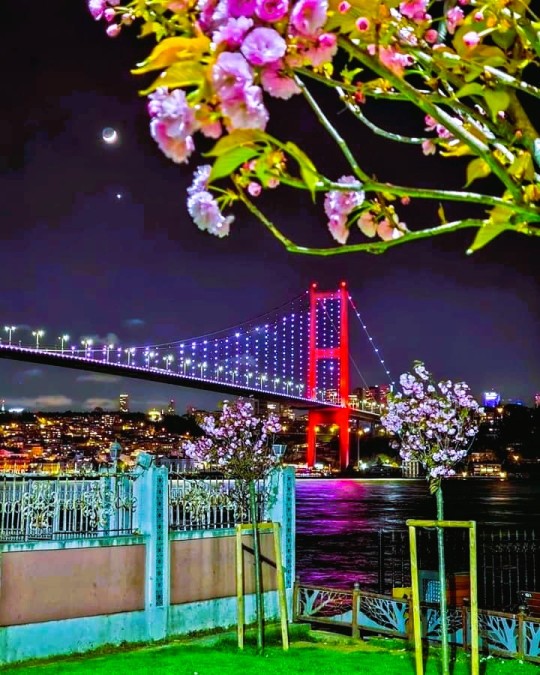
Bosphorus Strait, Istanbul, Turkey: The Bosporus or Bosphorus Strait is a natural strait and an internationally significant waterway located in Istanbul, Turkey. The Bosporus connects the Black Sea to the Sea of Marmara and forms one of the continental boundaries between Asia and Europe. It also divides Turkey by separating Anatolia from Thrace. Wikipedia
37 notes
·
View notes
Text
Saw a clip where Bill Gates is saying 2 degrees C of total global temperature rise isn't all that significant and I'm sitting here like buddy a 2-degree global temperature rise is why there are Bronze Age settlements at the bottom of the Bosphorus Strait
12 notes
·
View notes
Text
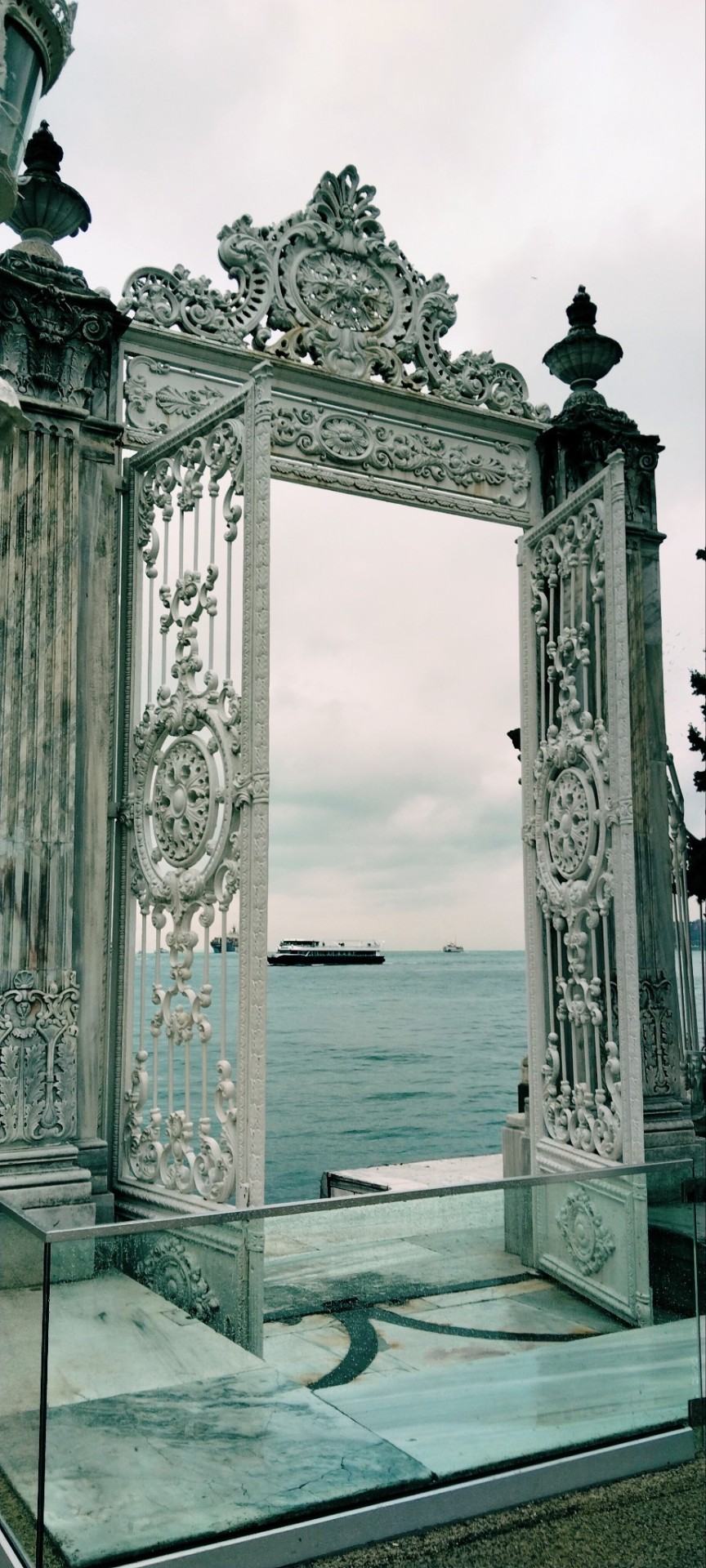
View of the Bosphorus straits
2 notes
·
View notes
Text
The Rise and Fall of Empires
After an uneventful day of transit, we landed quite late in Turkiye and were rushed quickly to dinner before we pulled in at the hotel that we would be staying at in Istanbul: the Pullman. On the two hour flight from Cairo to Istanbul (for most of the day, we simply sat around the hotel before hopping onto the coach that would deliver us to the airport at 10AM), I managed to watch Bullet Train and tick off the chaotic but fun movie from my long list of films that had looked interesting but I hadn’t bothered to go into the cinemas to actually well...watch.
In any case, by the time I had showered and fallen asleep on the soft bed at the Pullman, it was quite late and we had an early start the next day.
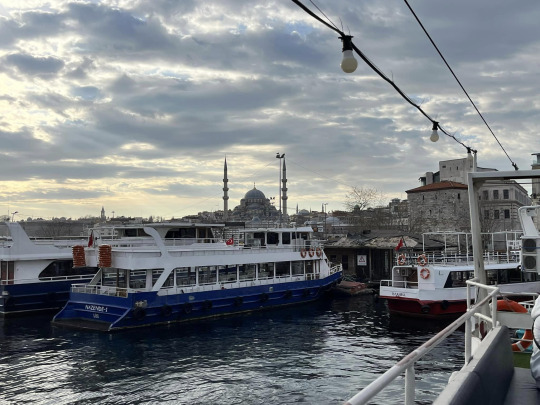
At about 6:35AM, I was rudely awoken by a morning wake-up call and served as a reminder that I was late! Popo and I came down for a hurried breakfast before boarding the coach that would take us around the ancient city of Istanbul, or Constantinople as it was previously known during the Byzantine and Ottoman eras.
We arrived at our first stop for the day: a decently sized marine vessel, just before 9AM. Hopping on, we enjoyed a cruise around the Bosphorus Strait, providing us with excellent views of the city of Istanbul. It should be known that the city straddles the bridge between Europe and Asia and has proven to be a pivotal beacon throughout most of history. It played a key role in Christianity before it fell to the Ottomans and became an Islamic stronghold.
As such, the history of Constantinople is really a history of the world, as well as a symbol of the West’s relationship with the East.
But back to a recount of my trip there!
It was unfortunate that we had arrived in the city in March. The weather was still quite cool and after a good thirty minutes, I felt quite frozen to my spot on the upper deck and quickly sought shelter from the fierce wind.
After our trip on the high seas, our ship pulled into port near the Dolmabahce Palace. In Chinese, the palace is often called the “New Palace” as it was built in and around the mid 1800s and was in use for approximately 70 years until the 1920s when Turkiye became independent.
The style of the Dolmabahce Palace, although commissioned by an Ottoman Sultan, was very European in design. However, this was soon explained by the fact that the architect for the palace had studied in France and had helped build similar types of buildings all across Europe.
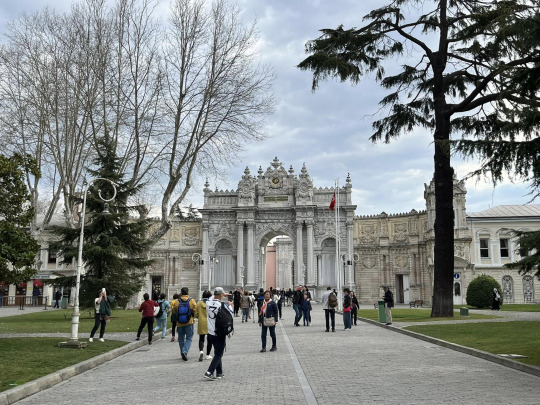

Still, the decorations inside the palace was a lot different to the ones I’d seen before in France and Austria. A shame, really, that photos were not allowed as I could show you rather than be forced to describe what I saw. Even though there were a few other tourists that took quite a few ‘subtle’ photographs of the rooms and the grand ceremonial hall.
Most notable, at least to me, were the paintings that lined the walls. Most of them depicted famous battles the Turks partook in. Another interesting piece of interior design that caught my eye was the crystal staircase, with the crystal primarily being the supporting columns of the banister.
Down in the old storage cellars, too, the palace sported numerous displays full of utensils compromised of Bohemian and Baccarat crystals. They also had Mosser glass, which the internet tells me can cost thousands of dollars because of their high-quality construction. Another location in the heart of the palace had displays for medals, weapons and Hokka sets.
But it should be noted that the palace also had similar trappings as its European counterparts such as the gilded halls, lavish drapings, huge mirrors, as well as beautiful chandeliers. Which will serve as useful material for my future writings although I lack photos for reference.
After touring the Dolmabahce Palace, we had a quick lunch in a spot that was, no doubt, frequented for its water views and which served as a popular fishing spot.
With our stomachs full of grilled fish, we headed to the Grand Bazaar, established all the way back in 1481 according to the plaque out front. There, we roamed the shops and I exchanged some Australian and American dollars into Turkish lira. And though there was a leather jacket I dearly wanted to purchase, my funds, unfortunately, did not have enough stretch to allow me to buy it out right. Nor did I want to risk using my debit card for fear that the details would be stolen and used for nefarious purposes.
Good riddance, I say! I didn’t want it anyways...
Maybe...
Gosh, I do wish I had bought that reversible leather jacket!
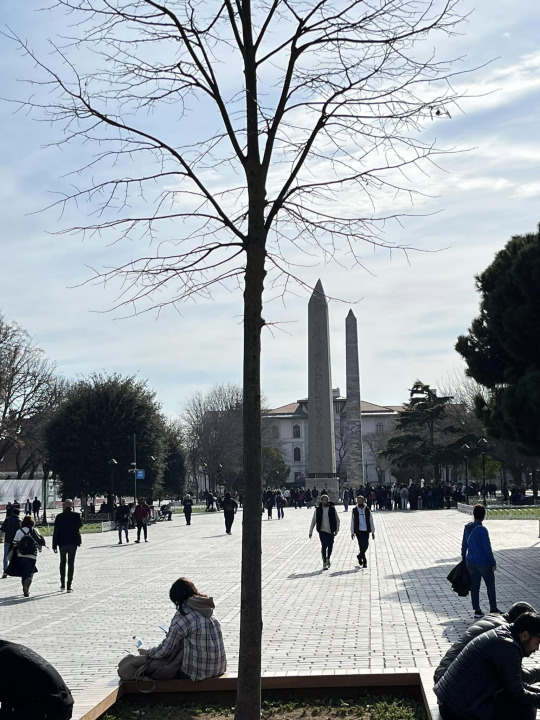

Once I had established how useless I was at haggling, we headed to the Blue Mosque, which sat opposite the Hagia Sophia. Due to ill luck, visiting on a Friday of all days, the Blue Mosque was closed by the time we arrived. It was also undergoing renovations. This fact angered one member of the tour group who was quite rude and aggressive to our tour guide for fear that we would miss out on all the key locations on the itinerary.
What he didn’t know, of course, was that the itinerary had already been rejigged when we had paid a visit to the Dolmabahce Palace earlier and we would have plenty of time upon our return to Istanbul to take a gander around a mosque if we so wished (which did happen, although it wasn’t the Blue Mosque!).
Undaunted by the trantrum thrown, the tour guide continued to tell us about the Roman Hippodrome that had been constructed in the heart of Istanbul and why the only signs of its presence was the obelisk that had been taken from Karnak Temple. Of course, we had already seen its twin when we visited Karnak Temple several days ago when we had given Egypt a whirl. Score one for a well-planned trip!
We then headed to the Hagia Sophia, which was initially built as a Church following the conversion of the Roman Empire to Christianity. The Hagia Sophia was later converted into a mosque when the Turks took the city. When Turkiye became independent, it served temporarily as a museum before being converted back into a mosque.
And to think that such a sight had been built in a mere 5 years!
True, a lot of the material, such as the Grecian columns used to support the roof, had been recycled from older buildings like a Temple to Artemis in the Ephesus region, but it still looked and felt like a marvel of engineering and vision.
The day ended with dinner at a doner kebab place before we headed back to our hotel for another long day ahead. Although, this time, we would mostly be on the road.


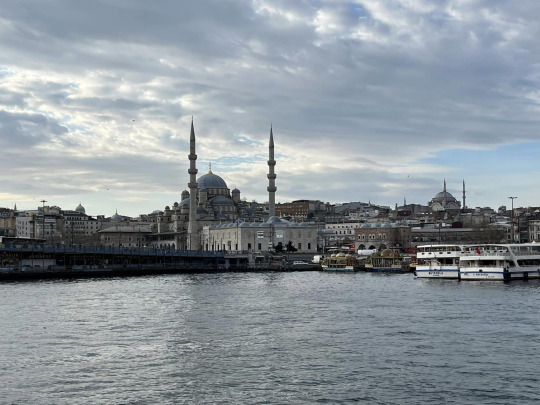

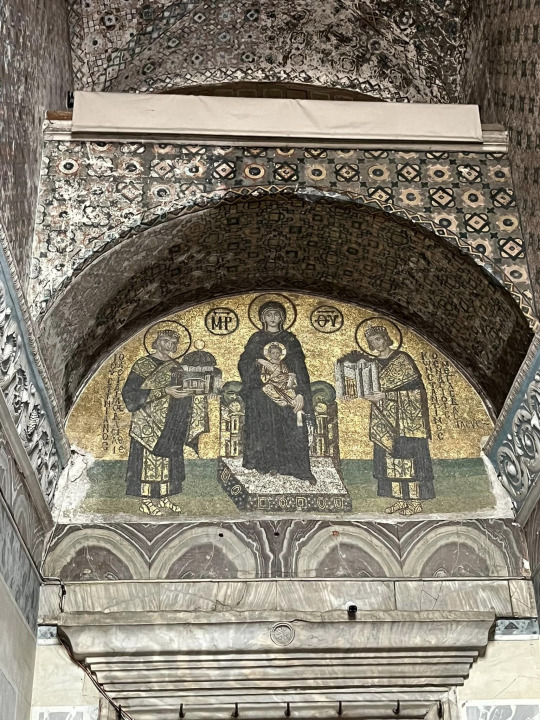
#travel blog#turkey#istanbul#constantinople#grand bazaar#bosphorus strait#dolmabahce palace#hagia sophia#hippodrome
3 notes
·
View notes
Text
EN | The Pearl of Turkey ISTANBUL
Istanbul is a city with a rich and complex history that spans more than 2,500 years. It is located in the northwest of Turkey, straddling the Bosphorus strait that separates Europe and Asia. The city has served as a major cultural, economic, and political center for centuries, and has been known by many different names throughout its history.

In ancient times, the city was known as Byzantium, after the ancient Greek colony that was founded there in the 7th century BCE. The city was later renamed Constantinople in the 4th century CE, after the Roman emperor Constantine the Great, rebuilt it as the new capital of the Roman Empire. During the Byzantine era, Constantinople was one of the most important cities in the world and was renowned for its wealth, culture, and architecture.
...
READ MORE 👉 traveler-roadmap.com
#Istanbul#Turkey#history#culture#architecture#tourism#Ottoman Empire#Byzantine Empire#Bosphorus strait#Hagia Sophia#Topkapi Palace#Grand Bazaar#modernization#industrialization#Pera Palace Hotel#cosmopolitan#economy#finance#infrastructure#modern architecture#museums#art galleries#cafes#skyscrapers#airport#bridges#modern metropolis
2 notes
·
View notes
Text
Jaan Roose Makes History: First to Cross Continents on Slackline Over Bosphorus Strait
In a breathtaking feat of skill and endurance, 32-year-old Estonian tightrope walker Jaan Roose has etched his name in history by becoming the first person to cross continents on a slackline. Roose crossed the Bosphorus Strait in Turkey, the natural divide between Europe and Asia, completing the daring 1,047-meter walk between eastern and western Istanbul in just 47 minutes.
Facing harsh 13mph…
0 notes
Text
Wait I'm a dumbass the app says fake Chipotle is closed on Fridays. Literally why would you do this to me. What have I done to you???? Were my European Geography fuckups really so terrible you would treat me this way (honestly yeah. deserved. I would also hate me for this)
#combining the words bosphorus and isthmus to make up a wholeass new strait where the bosphorus should be is bad enough. the shit#explanation of my logic (and honestly shit idea. the FUCK was i sayingggggggg not finding the flaws in mine shit till during then after i#started talking is so dire)#is a whole other level#just saw a whole group of 4 ppl do the same tjing w the fake chipotle right next to me btw#one girl also said it was her 2nd time getting turned away#girl literally MEEEEEE. mayhaps university policy would fix this#anyways moving to tuvalu
1 note
·
View note
Text
The Magnificence of the Bosphorus: Istanbul’s Timeless Strait
The Bosphorus Strait, a natural boundary dividing Europe and Asia, is not just a geographical marvel but a historical and cultural epicenter of Istanbul. Stretching approximately 30 kilometers, the Bosphorus connects the Black Sea to the Sea of Marmara, serving as a critical maritime route and a symbol of Istanbul’s unique position at the crossroads of civilizations. This article delves into the significance of the Bosphorus, exploring its historical landmarks, modern infrastructure, and the vibrant life along its shores.
Historical Significance
The Bosphorus has been a pivotal waterway for millennia, witnessing the rise and fall of empires. Ancient Greeks established colonies along its shores, appreciating its strategic and commercial importance. The Byzantines, followed by the Ottomans, fortified the Bosphorus with castles and fortresses, ensuring control over this crucial passage.
Notable historical landmarks include the Rumeli Fortress on the European side, built by Sultan Mehmed II in 1452 to prepare for the conquest of Constantinople. Opposite stands the Anadolu Fortress, constructed earlier by Sultan Bayezid I. These fortresses symbolize the historical tug-of-war for control over this vital strait.
Architectural Marvels
The Bosphorus is adorned with architectural masterpieces reflecting the grandeur of different eras. Dolmabahçe Palace, situated on the European shore, epitomizes Ottoman opulence with its blend of Baroque, Rococo, and Neoclassical styles. Constructed in the mid-19th century, it served as the administrative center of the late Ottoman Empire.
On the Asian side, Beylerbeyi Palace stands as a testament to Ottoman architectural elegance. This summer residence for sultans showcases a mix of Western and traditional Ottoman design elements. Additionally, the iconic Maiden’s Tower, located on a small islet near Üsküdar, offers a romantic and historic charm, often enveloped in legends and stories from different periods.
Modern Infrastructure
Connecting the two continents, the Bosphorus is spanned by three grand bridges. The 15 July Martyrs Bridge (formerly known as the Bosphorus Bridge) was the first to connect Europe and Asia in 1973. This was followed by the Fatih Sultan Mehmet Bridge in 1988, further easing the vehicular traffic between the continents. The latest addition, the Yavuz Sultan Selim Bridge, opened in 2016, accommodates rail and vehicular traffic, standing as one of the world's widest suspension bridges.
Submarine tunnels like Marmaray and the Eurasia Tunnel have revolutionized transportation in Istanbul. Marmaray, a rail tunnel, links the European and Asian parts of the city beneath the Bosphorus, facilitating efficient commuter transit. The Eurasia Tunnel, designed for vehicular traffic, provides a direct and rapid connection, alleviating surface traffic congestion.
Cultural Vibrancy and Natural Beauty
Life along the Bosphorus is a mosaic of cultures, traditions, and modernity. Neighborhoods such as Ortaköy, Bebek, and Arnavutköy on the European side, and Kadıköy and Üsküdar on the Asian side, offer a vibrant mix of cafes, restaurants, and historical sites. These areas are bustling with life, attracting locals and tourists alike with their scenic beauty and rich cultural offerings.
The natural beauty of the Bosphorus is undeniable. The strait’s waters provide a picturesque backdrop for the city’s skyline, dotted with minarets, modern skyscrapers, and historical edifices. Parks and green spaces like Emirgan Grove, Yıldız Park, and Fethi Paşa Grove offer tranquil retreats amidst the urban hustle.
Boating along the Bosphorus is a quintessential Istanbul experience. Ferries and private boats provide spectacular views of the shoreline, with its grand palaces, ancient fortresses, and charming wooden Ottoman mansions known as yalıs. Seasonal changes bring different hues and moods to the Bosphorus, from the vibrant colors of spring blossoms to the serene mist of winter mornings.
Conclusion
The Bosphorus is more than just a strait; it is the lifeblood of Istanbul, embodying the city's historical depth, architectural splendor, and cultural richness. As a bridge between continents, it continues to be a vital artery for trade, transportation, and cultural exchange. The Bosphorus stands as a testament to Istanbul's enduring allure, captivating the hearts of those who traverse its waters and walk along its shores.
#Bosphorus#Istanbul#Strait#EuropeAsia#HistoricalLandmarks#DolmabahçePalace#RumeliFortress#AnadoluFortress#Maiden'sTower#15JulyMartyrsBridge#FatihSultanMehmetBridge#YavuzSultanSelimBridge#Marmaray#EurasiaTunnel#OttomanArchitecture#ByzantineHistory#CulturalHeritage#ScenicViews#BosphorusCruise#Ortaköy#Bebek#Arnavutköy#Kadıköy#Üsküdar#EmirganGrove#YıldızPark#FethiPaşaGrove#Yalı#MaritimeRoute
0 notes
Text
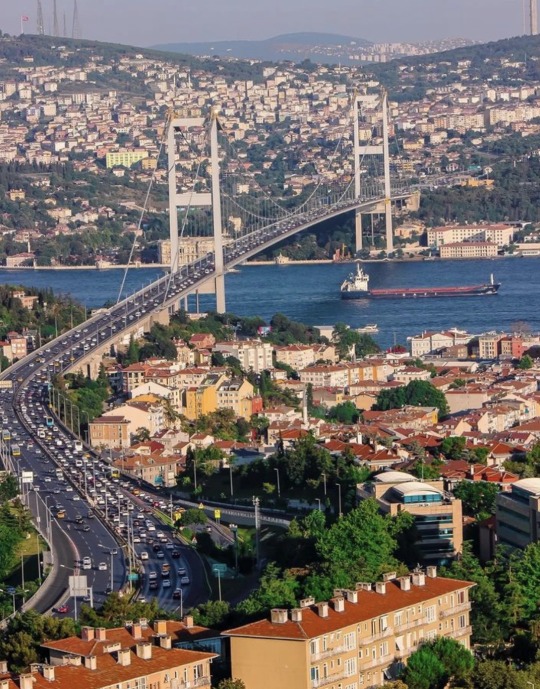

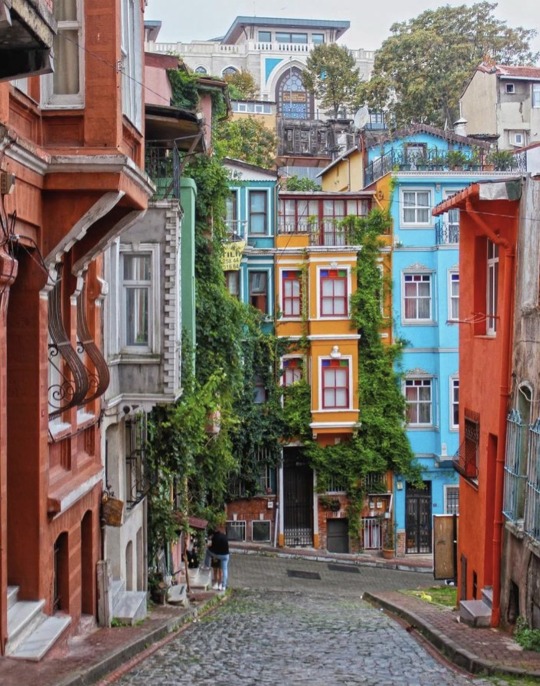


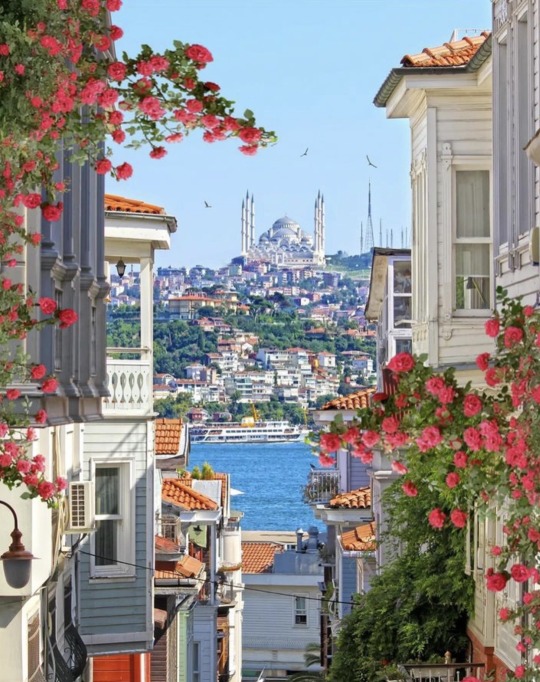
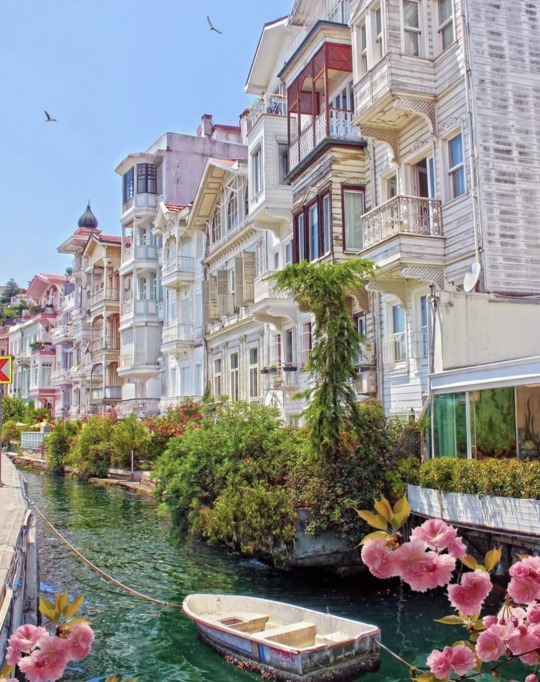
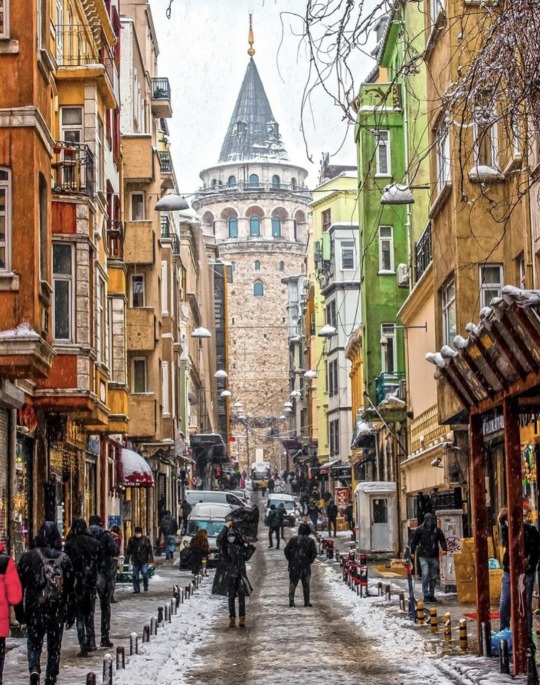


📍Istanbul, Turkey.
Photography amazingly captures the vibrant energy and rich history of Istanbul, Turkey. This magnificent city, spread over two continents, is a tapestry of centuries of cultures, colors and heritage. Istanbul, where East meets West, is a city unlike any other. Its skyline is adorned by the majestic Hagia Sophia and the elegant Blue Mosque, symbols of the city's deep historical roots. Wander through the bustling Grand Bazaar, a maze of colors and scents. Here, every alley and shop is a treasure trove of handicrafts, spices and textiles.
The Bosphorus Strait, a vital waterway, not only separates Asia and Europe but also offers some of the most picturesque views of Istanbul. A ferry ride on the Bosphorus is a must-do experience. Immerse yourself in the charm of the different neighborhoods of Istanbul. From historic Sultanahmet to modern Beyoğlu, each area tells its own unique story. Istanbul's cuisine is as diverse as its heritage. Try traditional Turkish delights, savory kebabs and fresh seafood, a real feast for the senses.
As the sun sets, watch the city transform into a golden hue. The silhouette of minarets and domes against the evening sky is a sight to behold.📸@mstfatyfn
275 notes
·
View notes
Text
Sahilbent, Bosporus, Istanbul, Turkey.
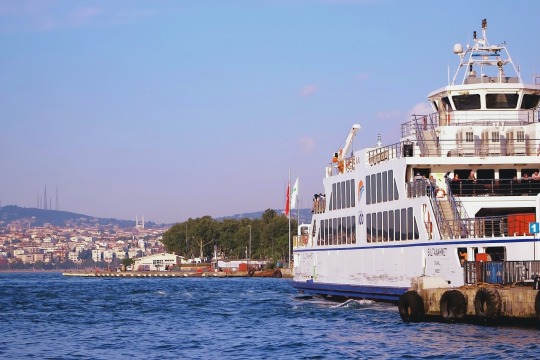
75 notes
·
View notes
Text

View of Leandrovsk tower in Constantinople by Ivan Aivazovsky
#ivan aivazovsky#marine#art#romanticism#leandrovsk tower#tower#constantinople#boats#water#byzantine#byzantines#byzantium#leander's tower#tower of leandros#bosphorus#bosphorus strait#turkey#istanbul#the maiden's tower#watchtower#ottoman#ottomans
147 notes
·
View notes
Text

Bosphorus Strait, Istanbul, Turkey: The Bosporus or Bosphorus Strait is a natural strait and an internationally significant waterway located in Istanbul, Turkey. The Bosporus connects the Black Sea to the Sea of Marmara and forms one of the continental boundaries between Asia and Europe. It also divides Turkey by separating Anatolia from Thrace. Wikipedia
44 notes
·
View notes
Text

1960 Cadillac DeVille Convertible ……view of the Bosphorus Strait in Istanbul.
65 notes
·
View notes
Text

Bosphorus Bridge, İstanbul, Turkey: The Bosphorus Bridge, known officially as the 15 July Martyrs Bridge and colloquially as the First Bridge, is the oldest and southernmost of the three suspension bridges spanning the Bosphorus strait in Istanbul, Turkey, thus connecting Europe and Asia. The bridge extends between Ortaköy and Beylerbeyi. Wikipedia
119 notes
·
View notes
Text
Dracula Dictionary, July 18th
Varna: a large city in Bulgaria, on the coast of the Black Sea
Whitby: a seaside town in the north of England
silver sand: a fine white sand used in gardening
Bosphorus: The Bosporus Strait, cuts through Istanbul to connect the Black Sea to the Sea of Marmara
Backsheesh: a tip, or a bribe paid to expedite services
Dardanelles: a strait that connects the Sea of Marmara to the Mediteranean Sea
Cape Matapan: the southernmost point of Greece
larboard: the left side of a ship
eight bells: referencing the ship's bell that is rung to time watches, with eight strikes per four hour watch. likely meaning 8pm here
deck-house: a cabin on top of a ship's deck
companion-way: a stairway or ladder that leads from one deck to another
bows: the frontmost point of a ship
hatchway: an opening in the deck
allay: calm, put to rest
stem: the most forward part of the bow
stern: the backmost part of the ship
handspike: a wooden bar, typically used in a capstan to raise the anchor
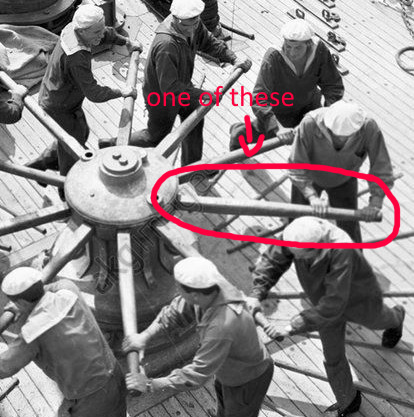
helm: the ship's wheel for steering
abreast: side by side
#finally some good words that actually need explaining#words failed me on the handspike though so you get a picture#dracula daily#re: dracula#dracula dictionary#18 july#dracula daily 18 july#dracula dictionary 18 july
187 notes
·
View notes